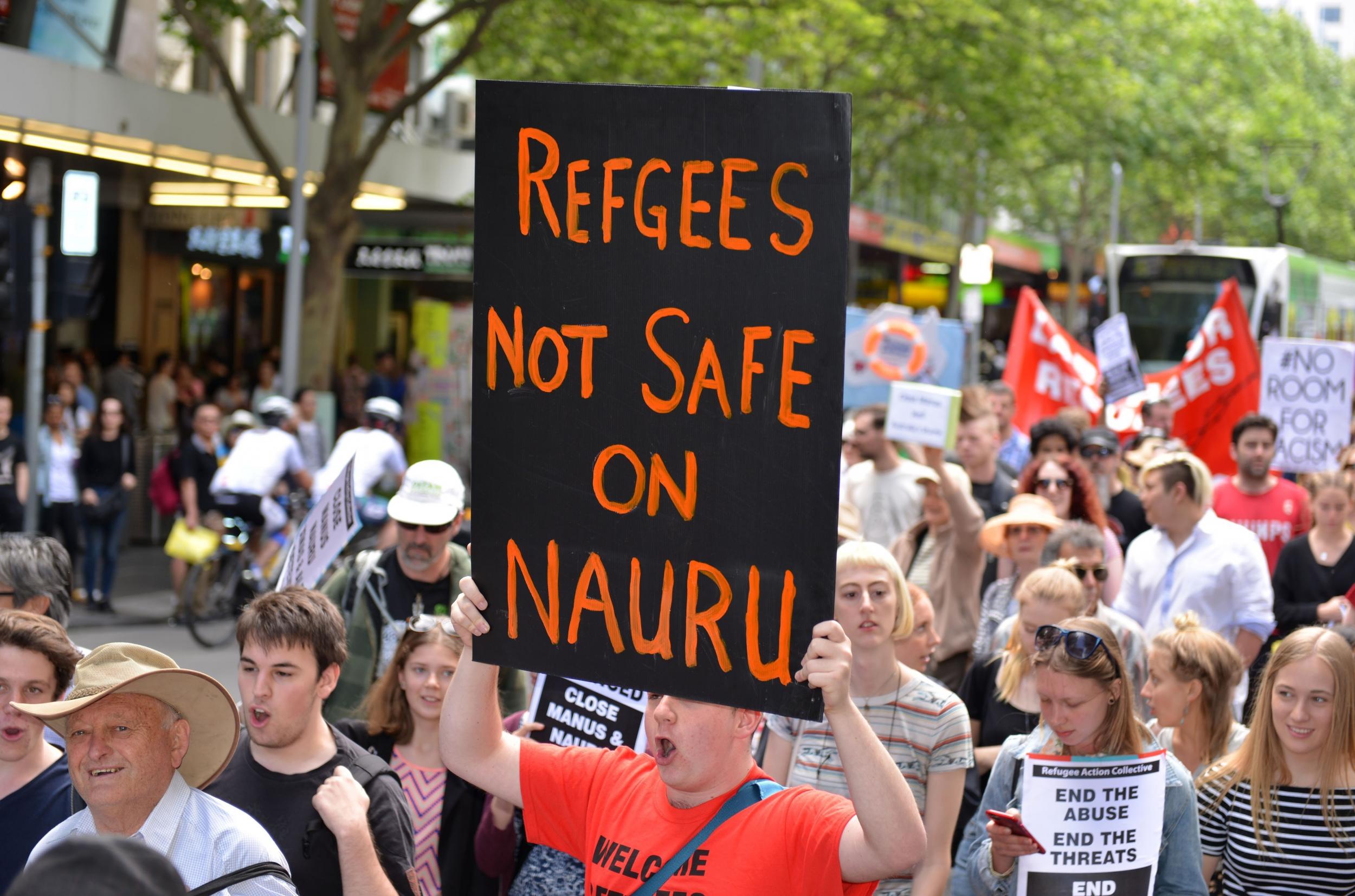There is increasing evidence that Australia is torturing refugees, medical experts claim
'Medical involvement in torture is often discussed in terms of what happens or has happened elsewhere, in some imagined country far away, under a military dictatorship for example, or historically in Nazi Germany or Stalin’s Russia'

Boris Johnson, Michael Gove and Nigel Farage have all called for the adoption of an Australian-style immigration system.
However, in a devastating critique of Australia’s methods, medical ethicists have warned there is “increasing evidence that Australia is engaged in torturing asylum seekers” with refugees imprisoned for more than a year without trial.
There are allegations of waterboarding, another method of torture called “zipping” in which people are tied to a bed that is then thrown into the air, sexual assault and exploitation, and child abuse.
And the inmates of detention centres created outside of Australia to avoid its laws are held in conditions of secrecy that prevent scrutiny of their treatment while laws prevent doctors speaking out about mistreatment.
Last year, a United Nations report accused Australia of breaking the Convention Against Torture over its treatment of migrants.
The then Prime Minister, Tony Abbott, responded that “Australians are sick of being lectured to by the United Nations”, saying their policies had stopped refugee boats from trying to make the perilous sea journey to Australia and “ended the deaths at sea”.
In a paper in the Journal of Medical Ethics, the ethicists, Dr John-Paul Sanggaran, of the University of New South Wales, and Professor Deborah Zion, of Victoria University, wrote that there was “increasing evidence that Australia is engaged in torturing asylum seekers”.
“There are allegations of situations, circumstances and actions that also constitute cruel and unusual punishment throughout Australian immigration detention,” they wrote.
They pointed to allegations by guards at a detention centre on the island of Nauru “of waterboarding, familiar to most as a torture technique that simulates drowning used by the Central Intelligence Agency (CIA) in places like Guantanamo bay”.
“‘Zipping’ is also alleged. It is described as tying an individual to a metal bed frame with cable ties, the bed is then thrown into the air causing injury to the bound individual when the frame crashes to the ground,” they added.
The ethicists said it was “of great concern and significance” that protections that ensured asylum seekers’ human rights “have long been absent in the Australian immigration detention setting”.
“In this way, those who control the collection and dissemination of information, in this case successive Australian governments extinguish evidence of the suffering of those in the present and silence their voices for all time,” they said.
“It is in this silence that policies which undermine human rights facilitate substandard care, child abuse and now, perhaps, more active and egregious examples of torture.”
In another article in the journal, Professor David Isaacs, who provided paediatric services at an immigration detention centre, said the prolonged imprisonment was “arguably to coerce asylum seekers into voluntarily returning to their own or another country and to deter others from seeking asylum”.
The consequences of such detention were “severe mental health problems including anxiety, depression, posttraumatic stress disorder, self-harm and suicidality”.
10 things immigration has done for Britain
Show all 10Professor Kenneth Boyd, of Edinburgh University, who is an associate editor of the Journal of Medical Ethics, wrote in a related article that “medical involvement in torture is often discussed in terms of what happens or has happened elsewhere, in some imagined country far away, under a military dictatorship for example, or historically in Nazi Germany or Stalin’s Russia”.
He spoke of the moral dilemma for healthcare staff when asked to treat someone who may have been tortured.
“On the one hand, any involvement whatever in the practice of torture, countenancing or condoning as well as participating, is forbidden, formally by the World Medical Association 1957 Declaration of Tokyo, but more generally by the professional duty to do no harm,” he said.
“On the other hand, the professional duty of care, and more generally human decency and compassion, forbids standing idly by when no other professional with comparable skills is available to relieve the suffering of victims of torture.
“But then again, they may also be all too aware that in exercising their duty of care they may simply be ‘patching up’ the victims in order for them to be tortured again.”
Professor Boyd said that given the interest in Australia’s immigration control policies in Europe and other places, the practices of its detention centres should be “of moral concern elsewhere also”.
“Popular sentiment in relatively peaceful and prosperous countries which are the desired destination of migrants from war-torn or impoverished parts of the world may not always wish to know all of the means by which immigration is controlled,” he said.
“Internationally, however, the medical community cannot now easily go back on its commitment to not countenancing, condoning or participating in ‘the practice of torture or other forms of cruel, inhuman or degrading procedures’.”
Subscribe to Independent Premium to bookmark this article
Want to bookmark your favourite articles and stories to read or reference later? Start your Independent Premium subscription today.

Join our commenting forum
Join thought-provoking conversations, follow other Independent readers and see their replies